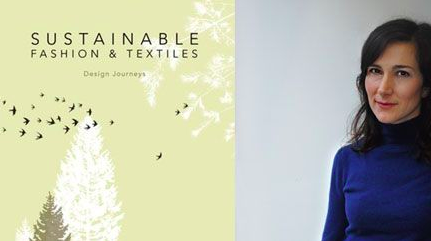Slow the New Black?
This article has been supplied by David Douek, founder of “eco-”, where consumers can discover eco-friendly alternatives for everyday products.
Never before has humanity had a plethora of choices than in our current times! A simple online search would offer you tens and hundreds of options if you were to buy anything online, including a fashion item.
Interview with Kate Fletcher, click here.
One of the latest terms in the sustainable fashion industry is slow fashion, which is highly accredited to Kate Fletcher. But what is slow fashion? How different is it from ethical and eco fashion? And what is the difference between slow and fast fashion?
What is Slow Fashion and Why it Matters
Slow fashion is more than just slowing down on the number of fashion items you buy and asking yourself whether they are sustainable. It also involves considering the processes concerned in
The Production Of Those Fashion Items
The Supply Chain
The Longevity Of The Products
When making a purchase, just ask yourself the following questions:
How many of these items do we buy?
What happens to what we do not buy?
And what happens to the low-quality product that does not last?
Are the workers producing your favorite fashion item paid well and working in a safe environment?
What is the environmental impact of the fashion item during production and shipping? How long can you use the product?
It is a holistic, intentional, and conscious approach to fashion, much like it is on slow-living.
Slow fashion reminds us that we do not need all these items to survive. You can buy only what you need and let it serve your needs for years to come.
With this, we reduce negative impacts on our environment by using natural and sustainable processes and raw materials. It also helps in improving the quality of available items and the lives of workers involved in the production.
Slow fashion vs. Fast fashion
Remember the plethora of options you were getting online earlier on? Most, if not all, of those options, belong to fast fashion. These are mass-produced and cheap fashion items that rely on the replication of fashion styles and trends from renowned brands and designers.
While fast fashion lets you afford fashionable items at a lower price, it comes at a higher cost to our environment and to the workers sweating away in a factory.
For starters, manufactures of fast fashion often items use cheap and unnatural resources in the production process - from synthetic fibres to harsh chemicals that can end up in our water bodies.
To say the working conditions of workers in fast fashion is wanting is an understatement. It involves lower pay, child labor, poor working conditions, as well as slave labor...
Slow fashion vs. Eco and Ethical Fashion
Do not get us wrong; all these matters to an eco and sustainable consumer. But the definitions can cause a lot of confusion.
Here is how to differentiate:
Eco-fashion: also sustainable fashion, is mostly about the impact on the environment. It revolves around shopping for fashion items based on whether the materials used are organic, repurposed, recycled or recyclable. It is also about reducing the wastage of energy and water.
Ethical fashion: involves human and animal rights like their treatment, fair pay, friendly working conditions, and no modern-day slavery or child labor.
Obviously, one doesn’t exclude the other and often, sustainable fashion brands will also be ethical (and vice versa). But just keep in mind that this is not always the case!
Although slow fashion is a relatively new trend, to an eco consumer, it comes as a much needed sustainable approach to our fashion purchases. We need to slow down on our shopping and buy quality items with sustainable production processes. This reduces the need to overproduce and increases the use of sustainable methods in the production process.
The next time you pick a fashion item from a store, ask your self, “do I need this?” if not, put it down and embrace slow fashion.
Further reading:

